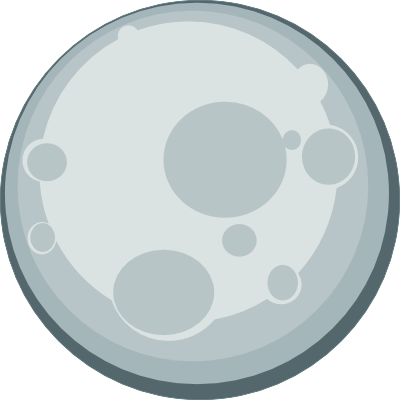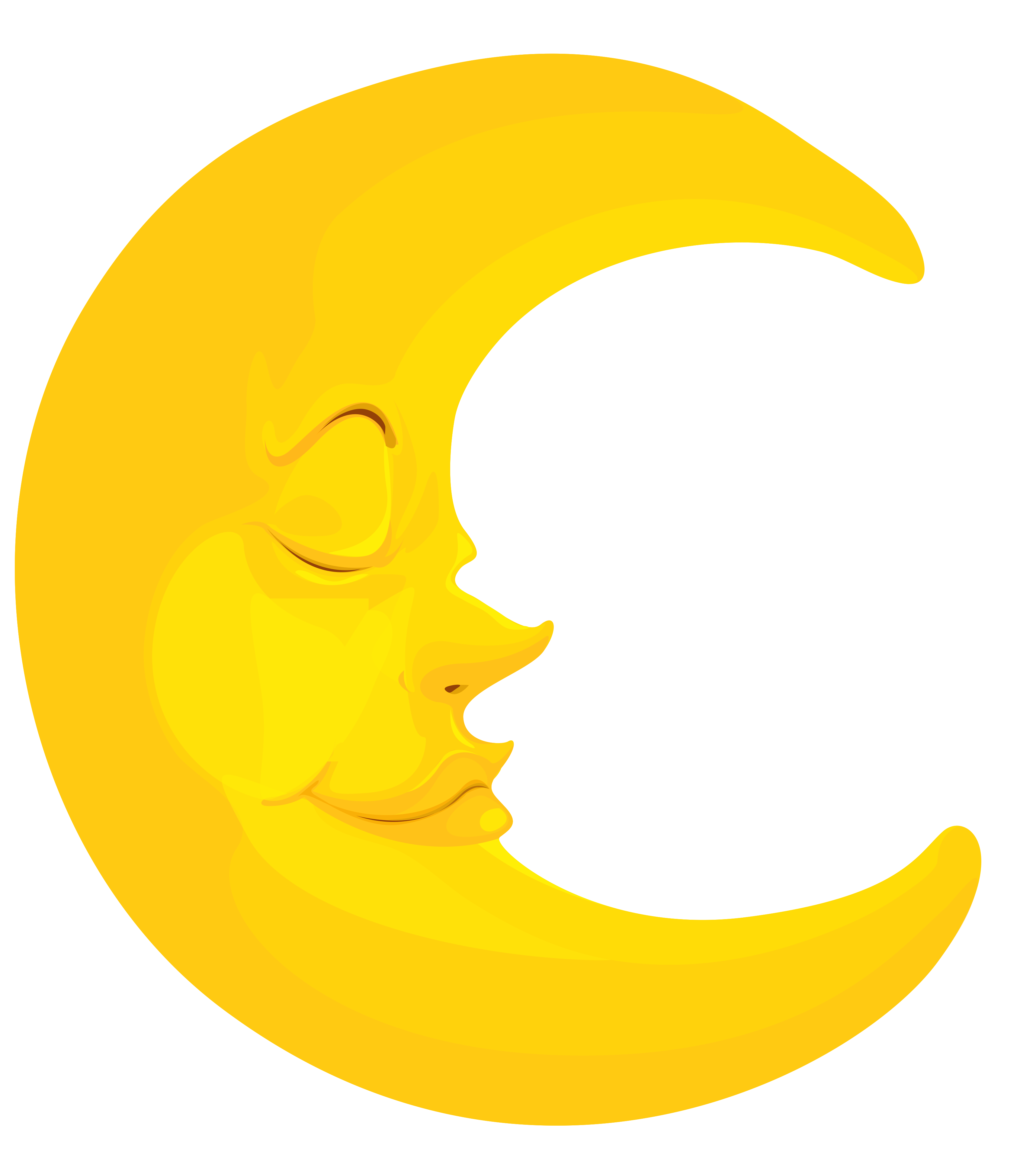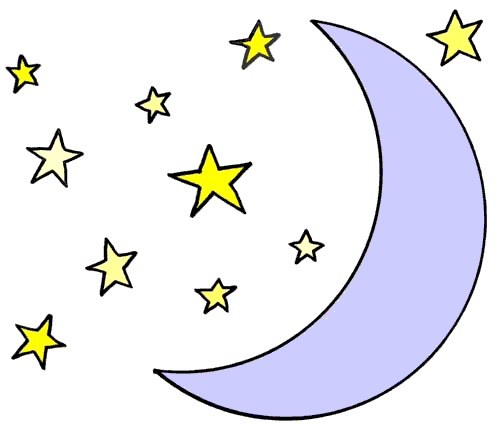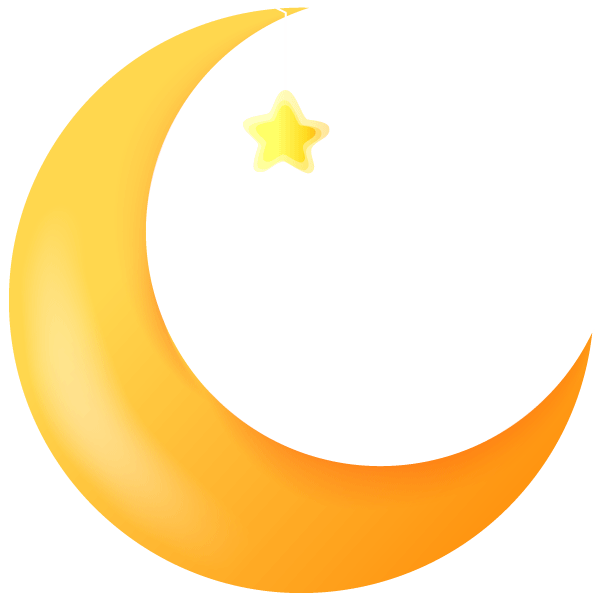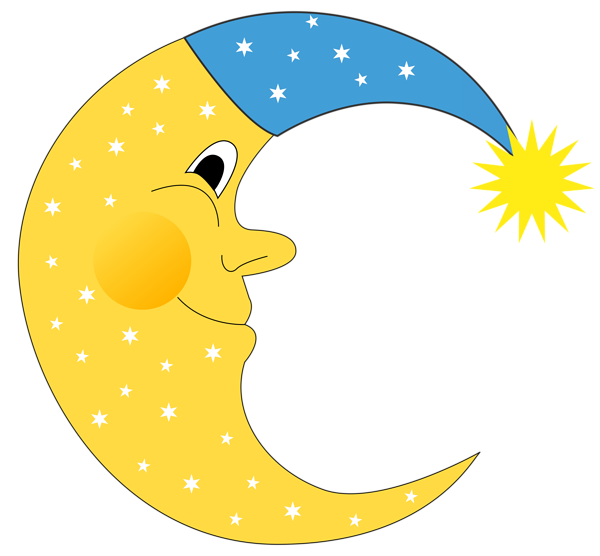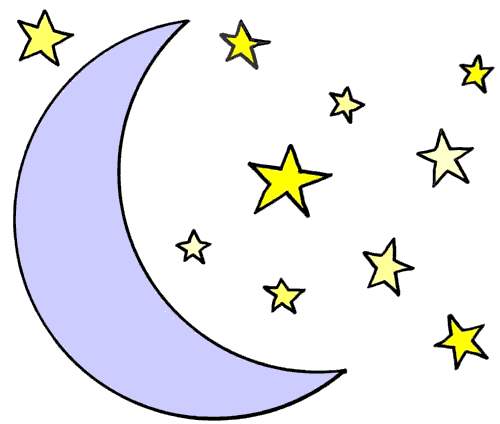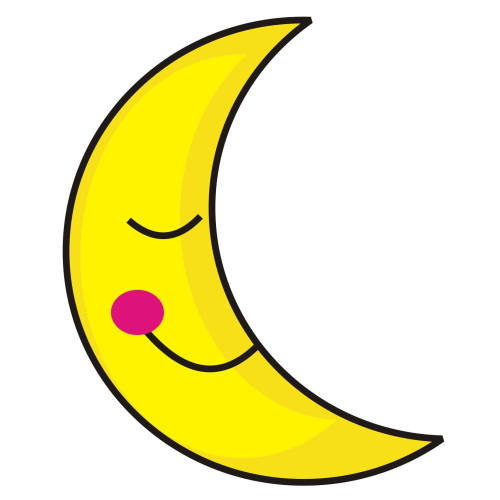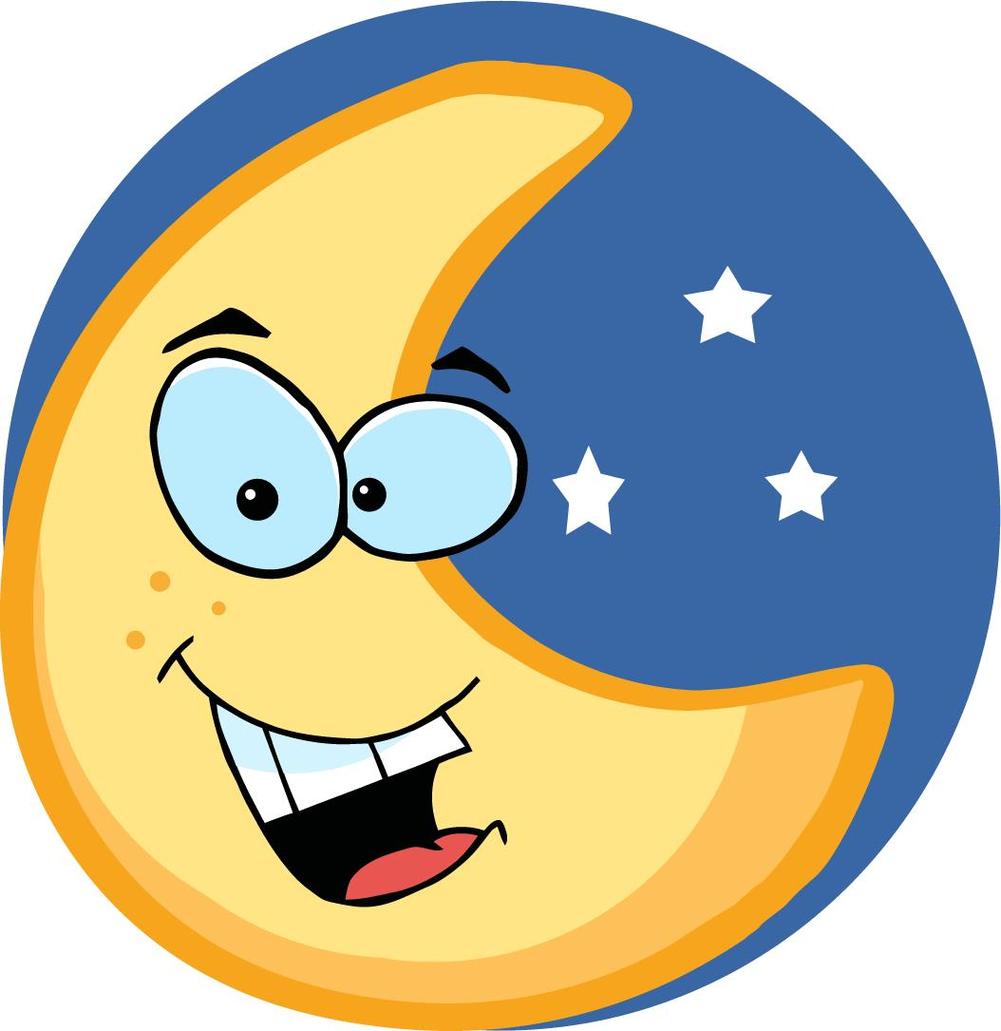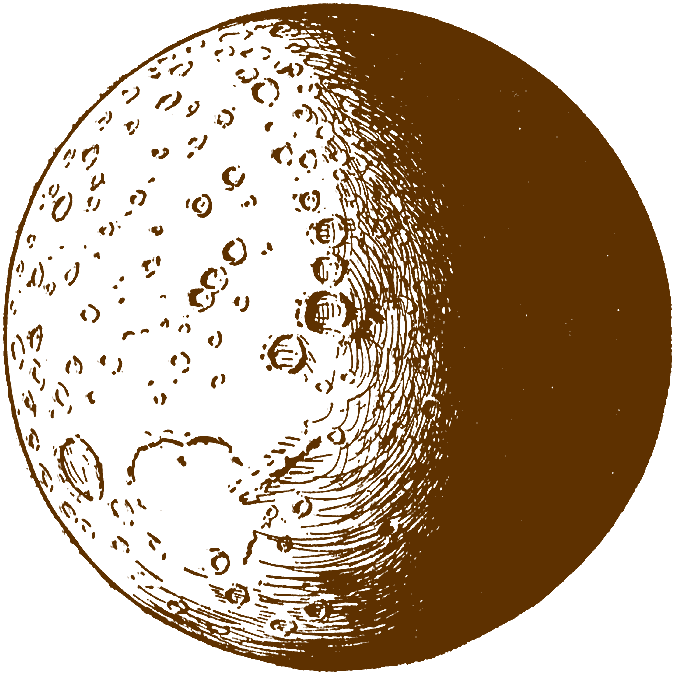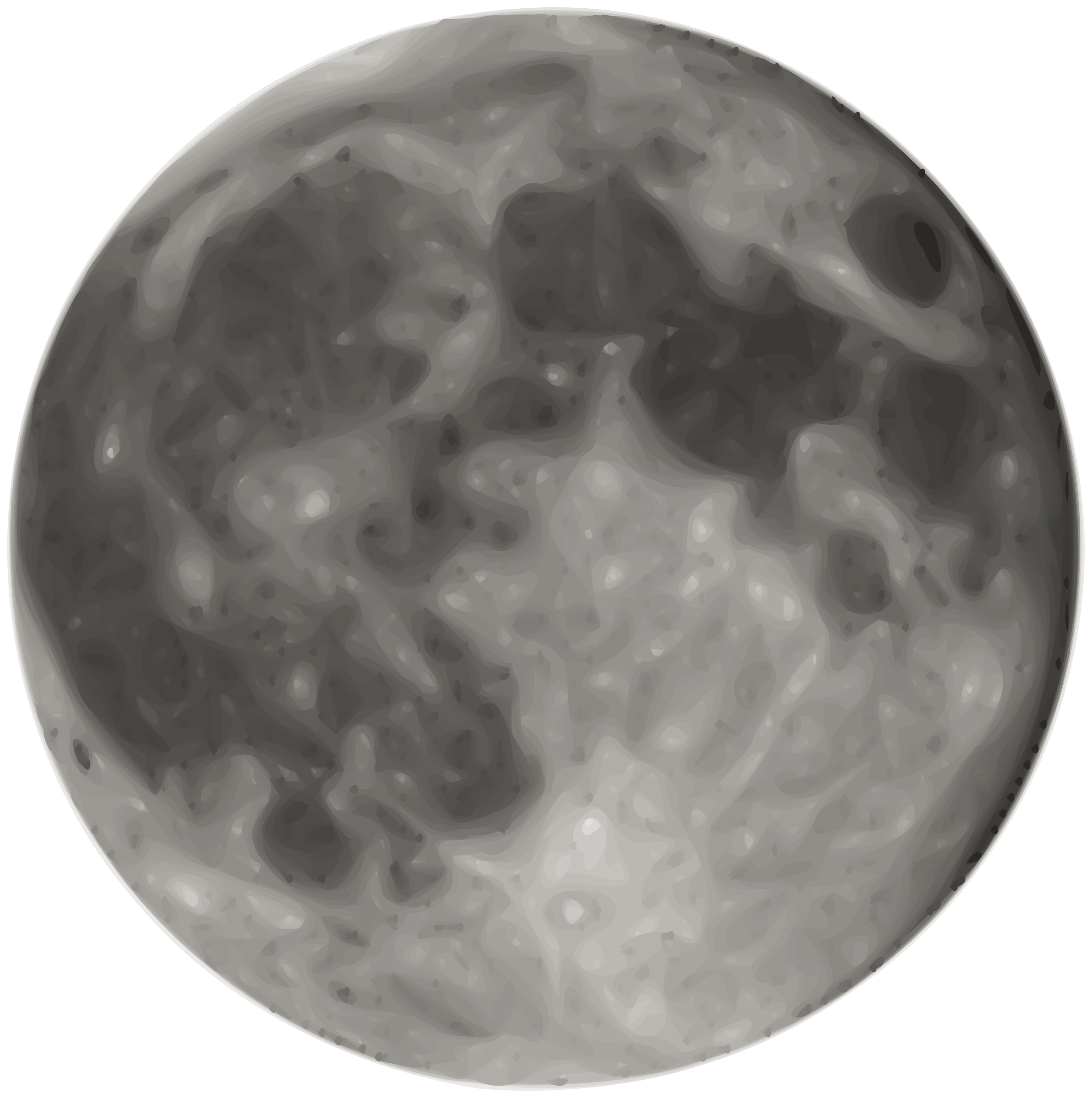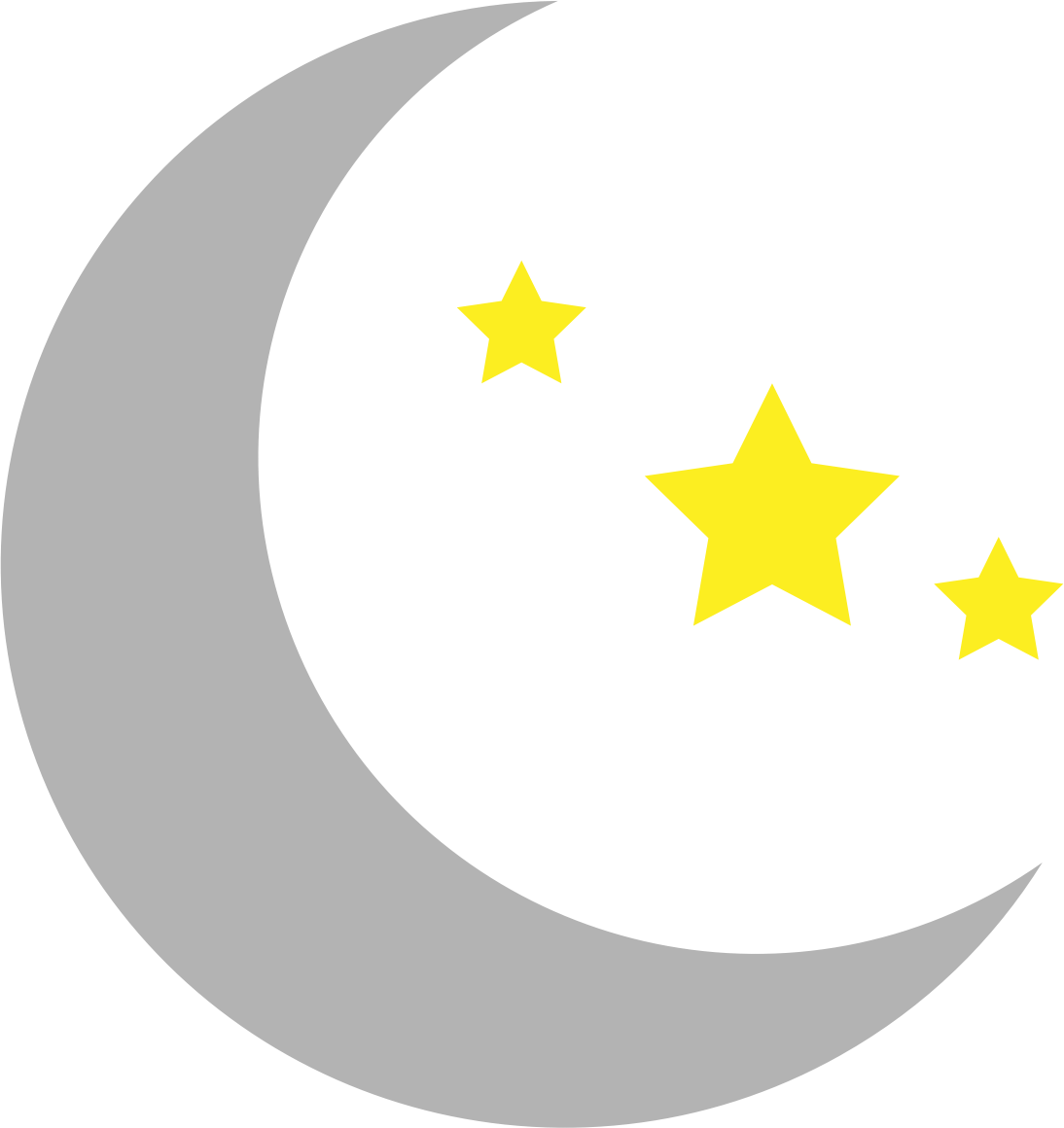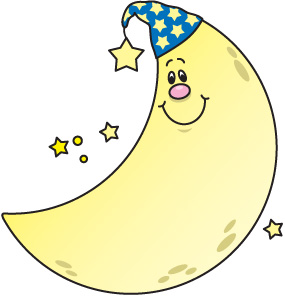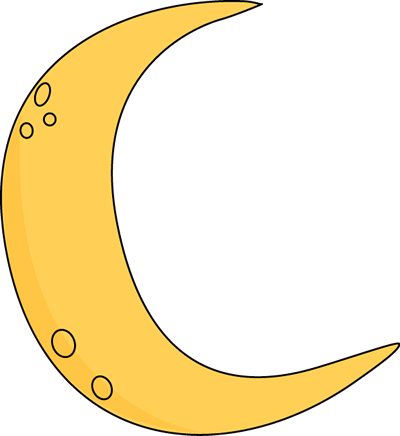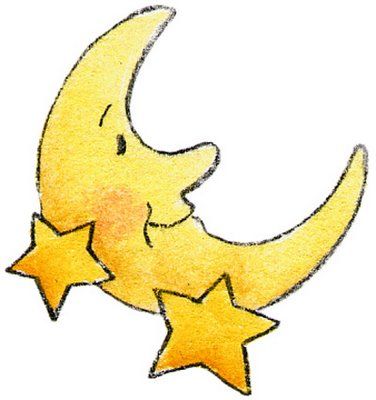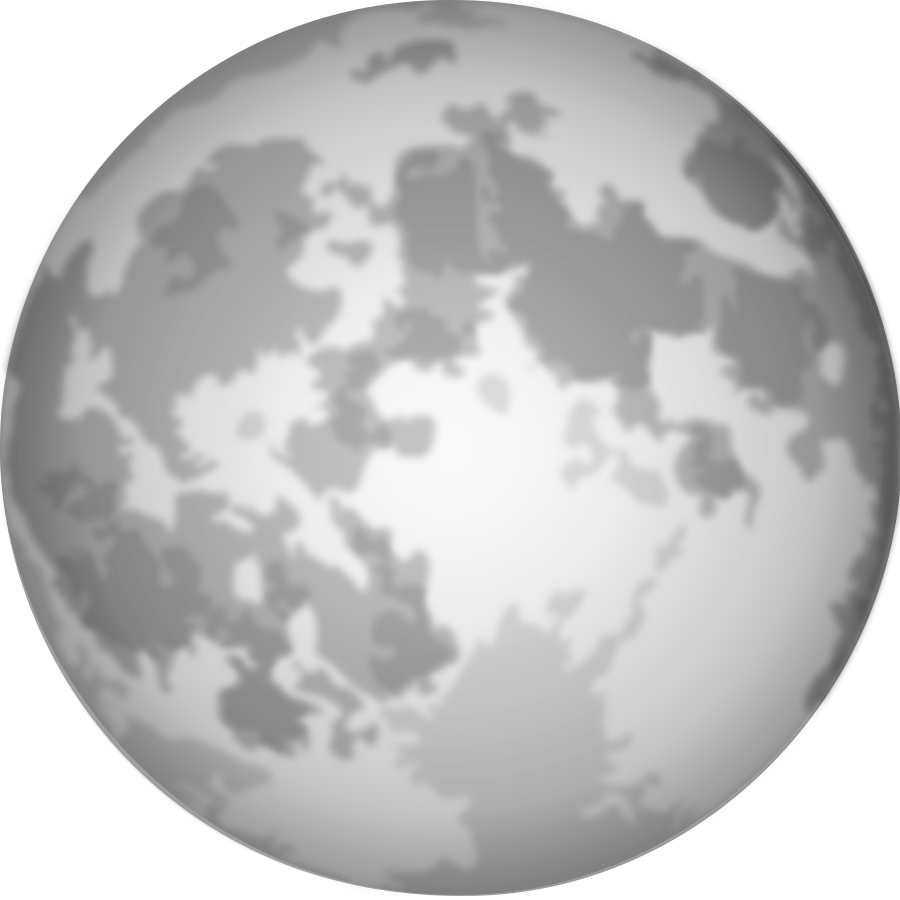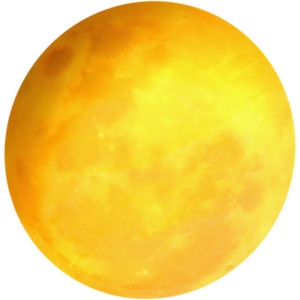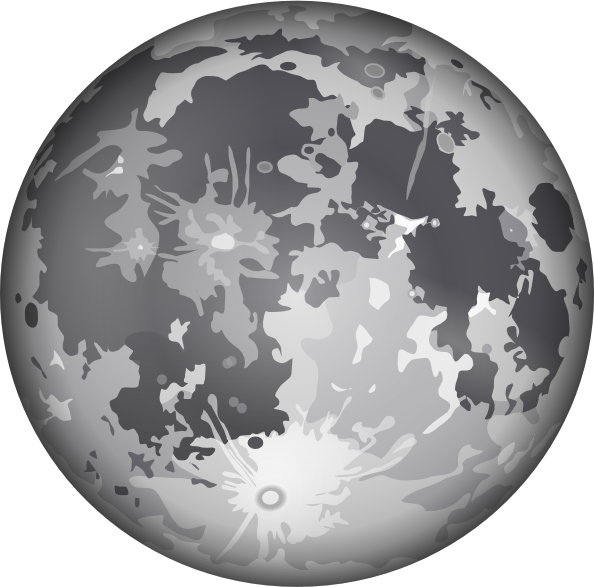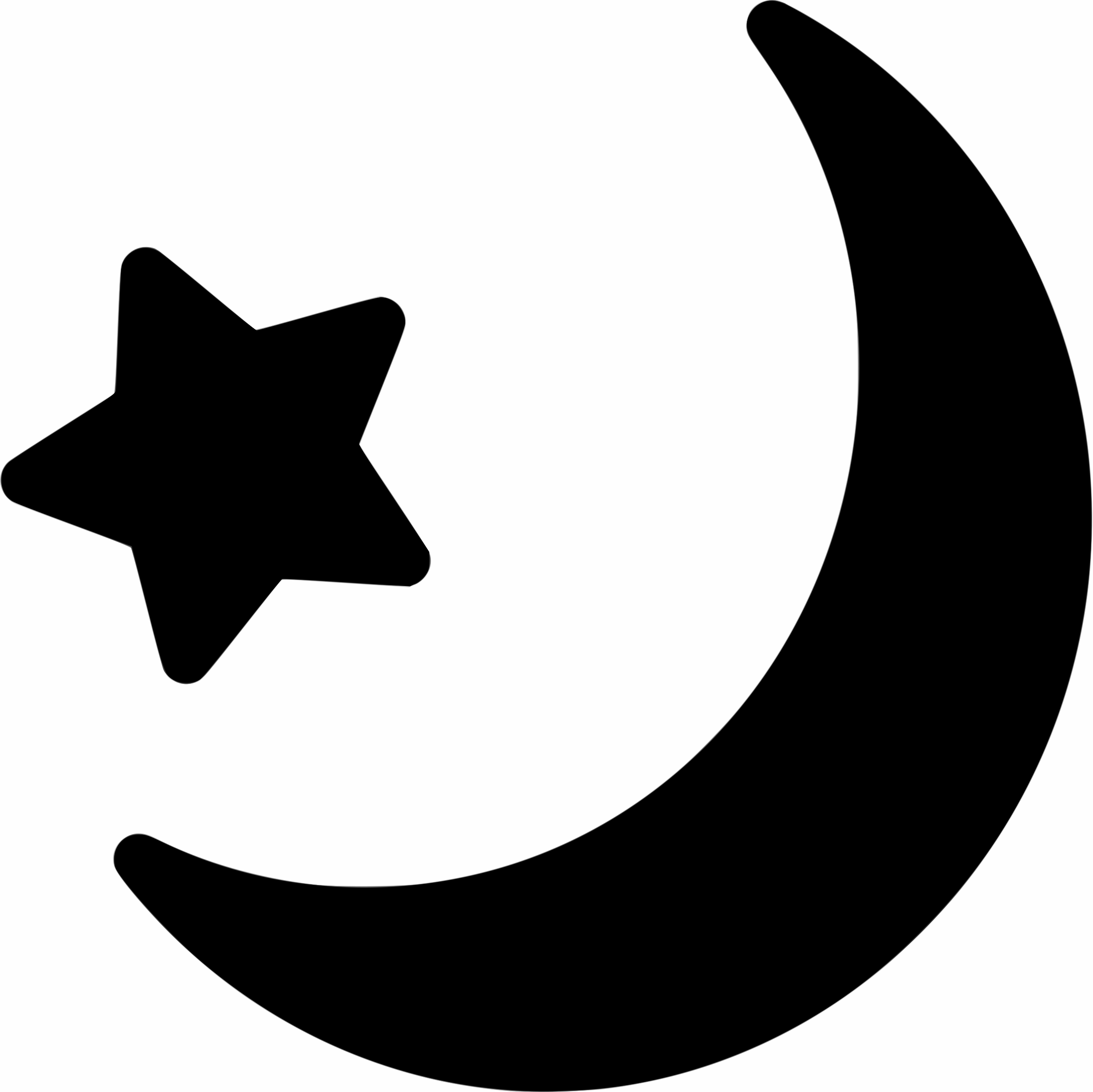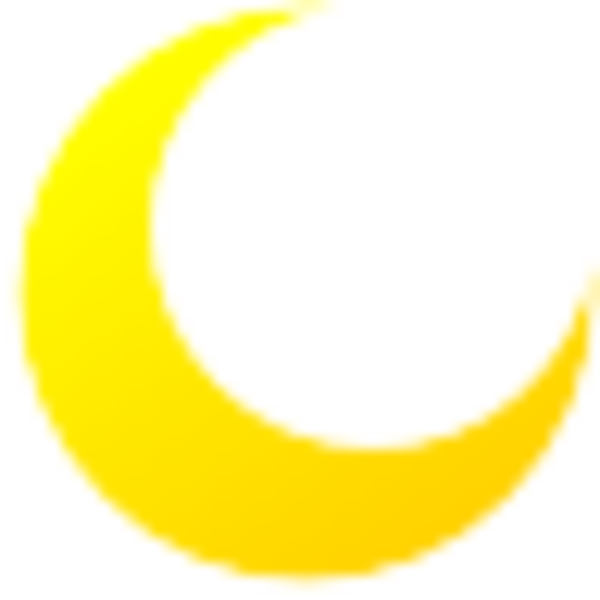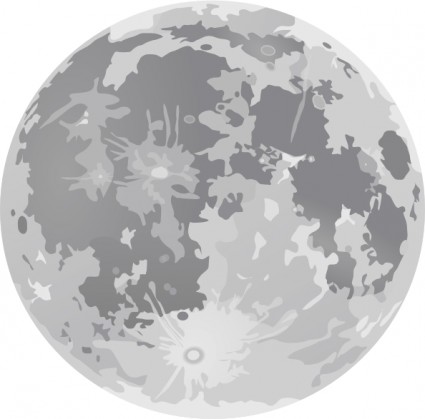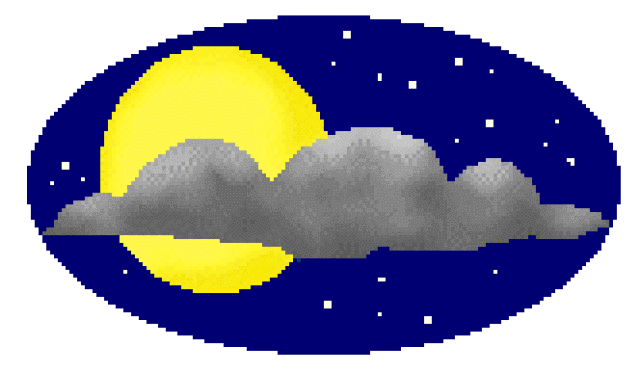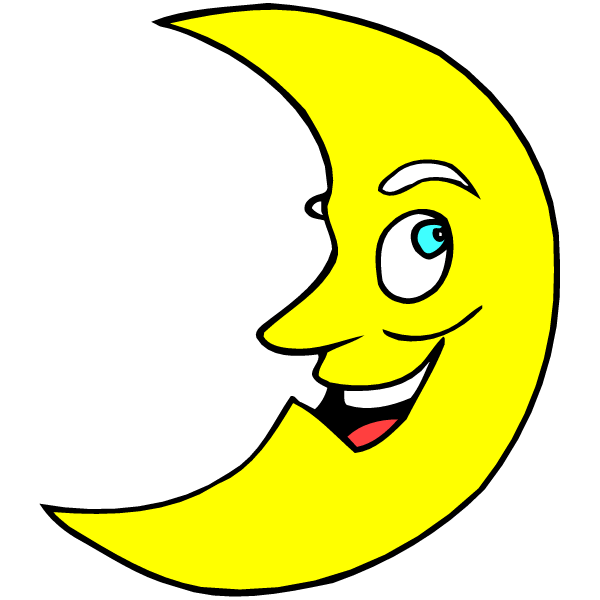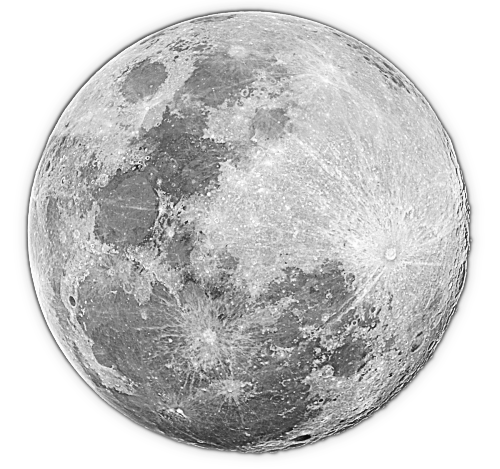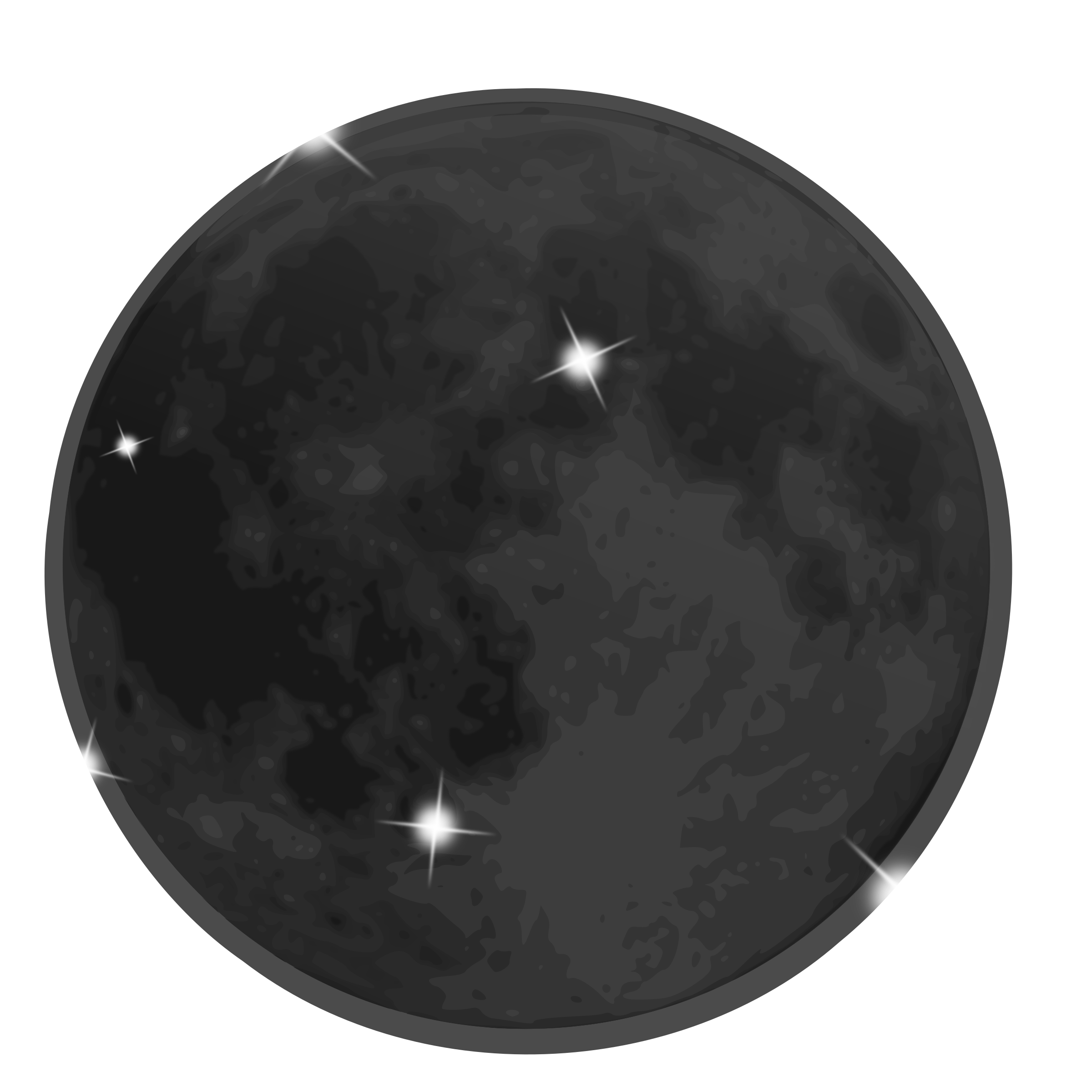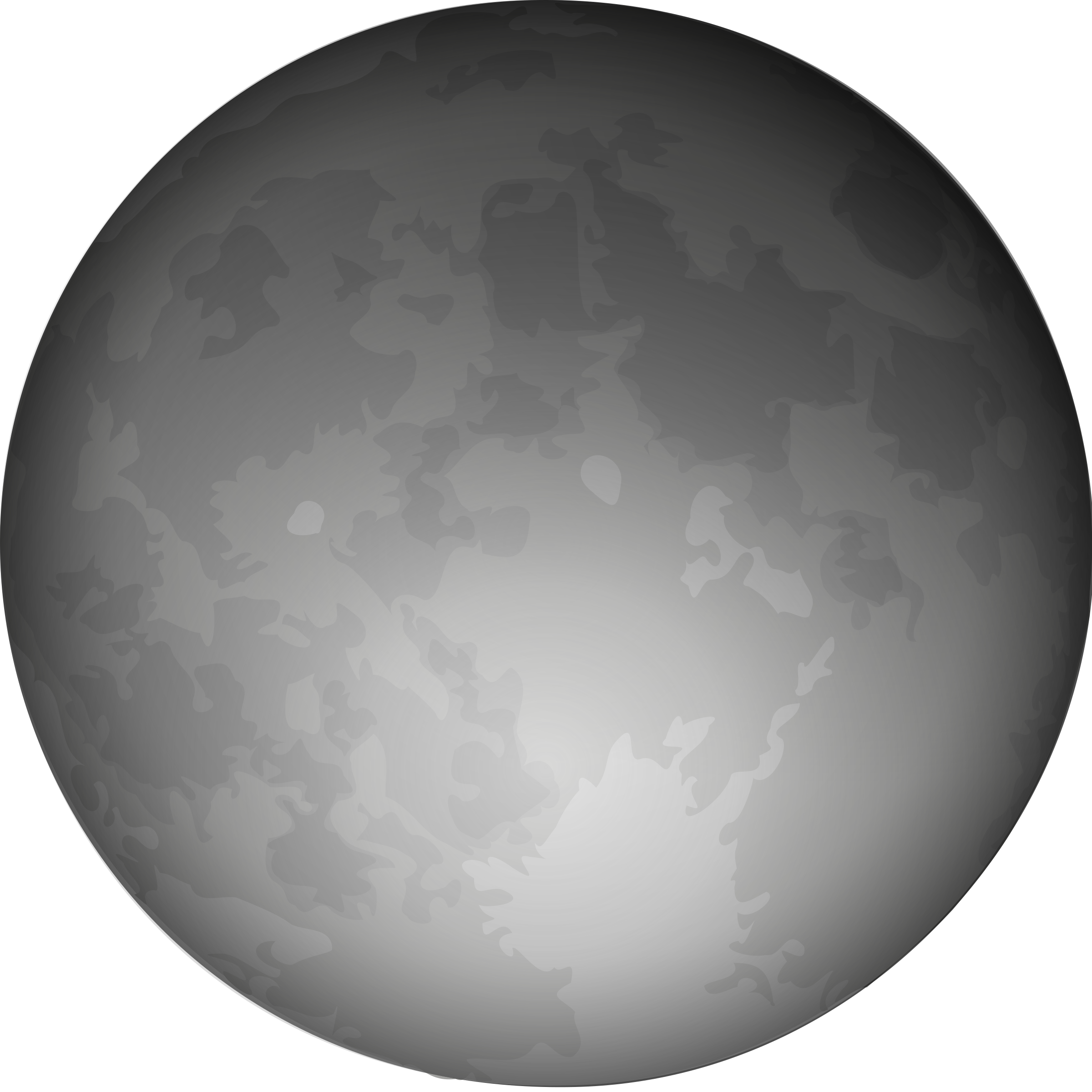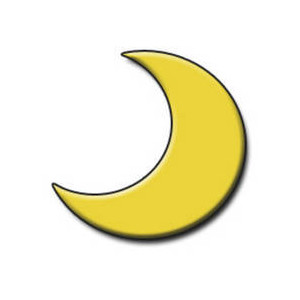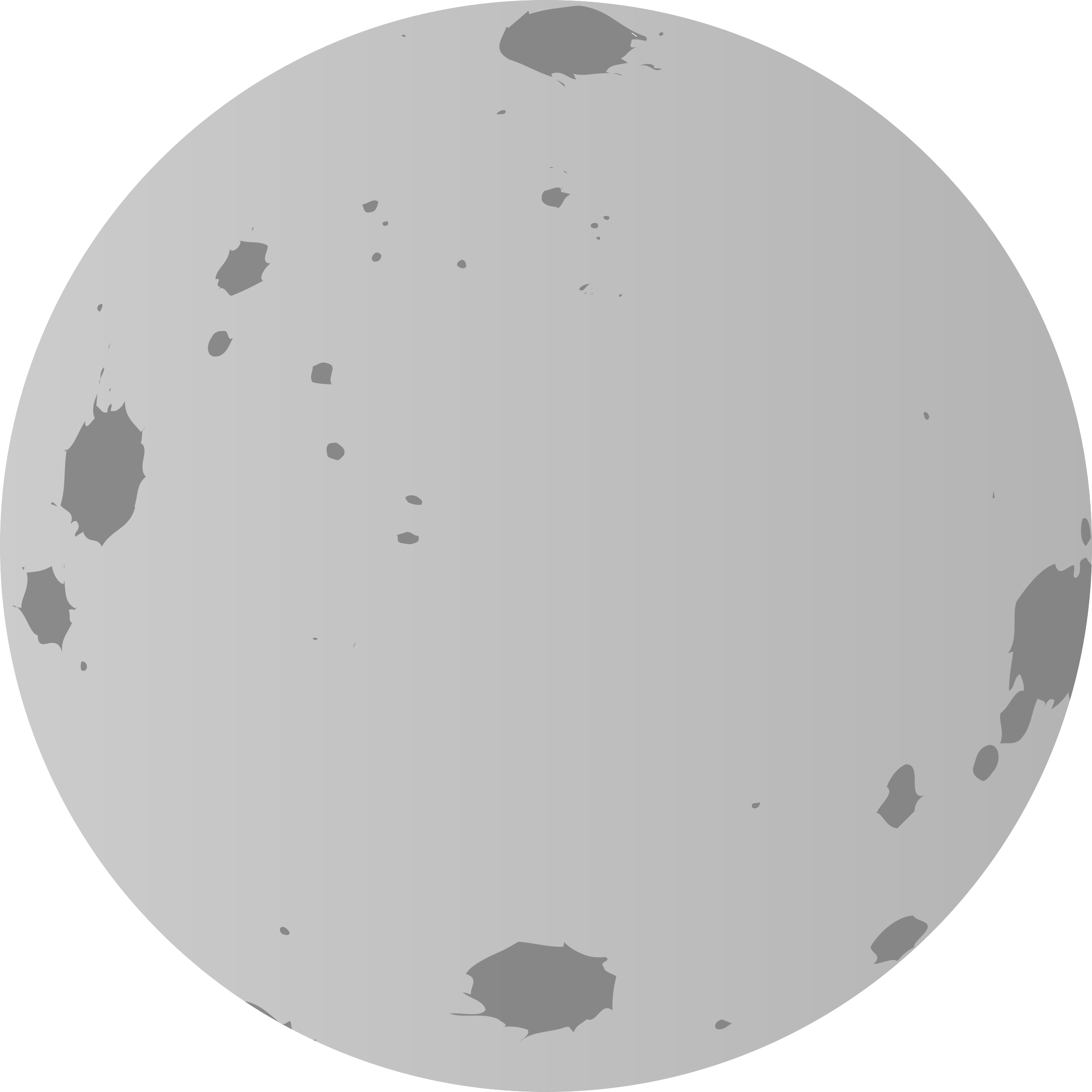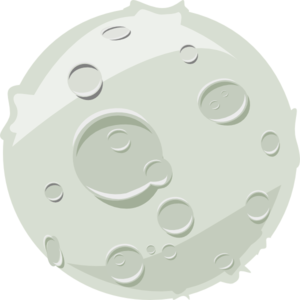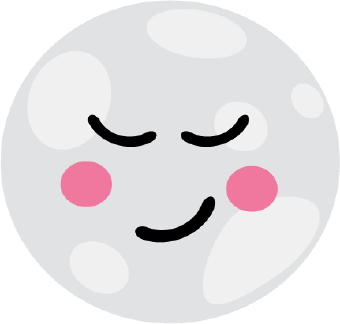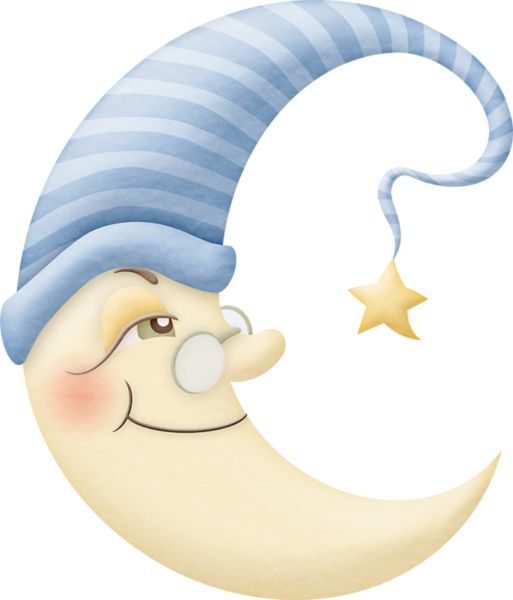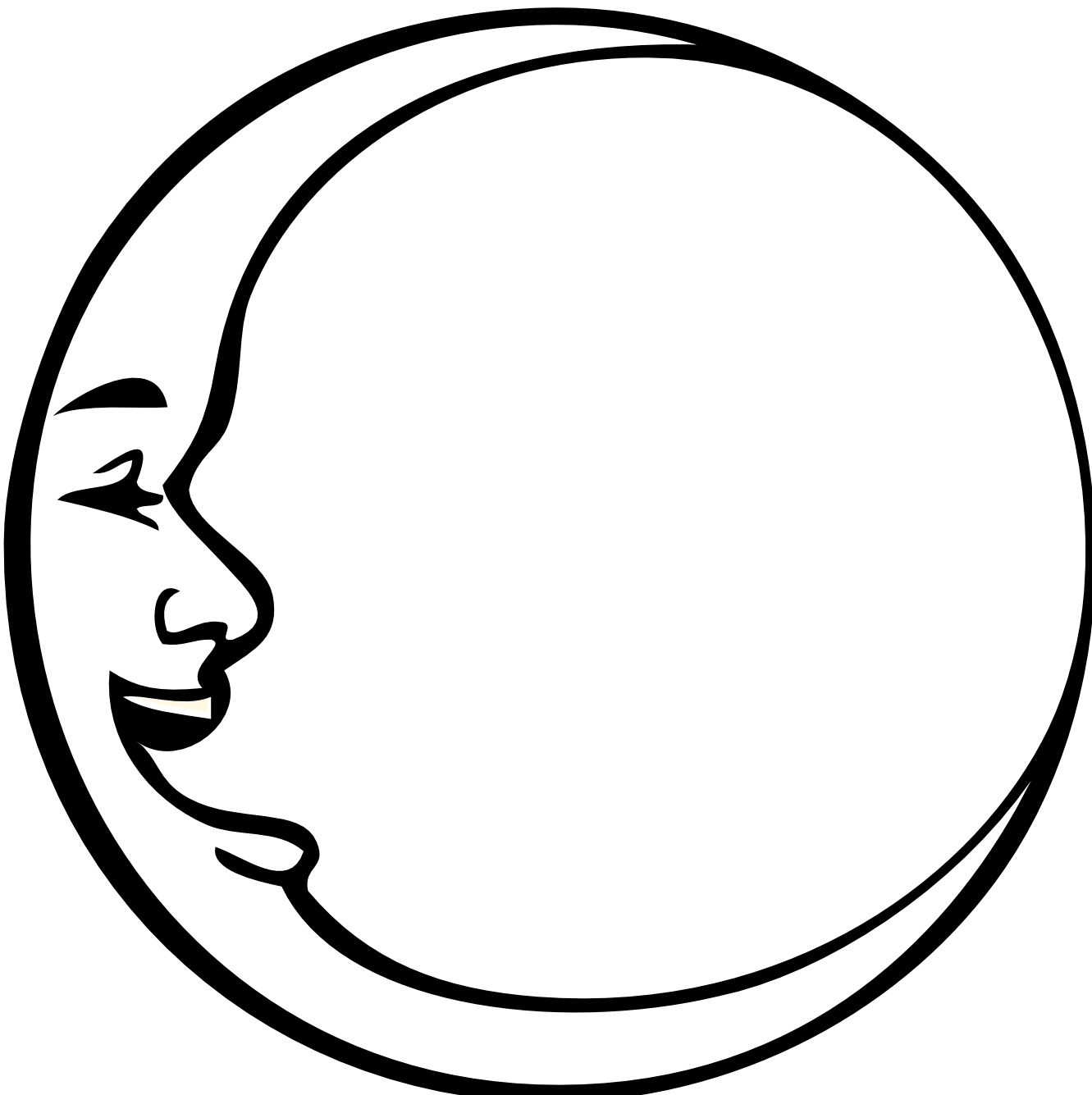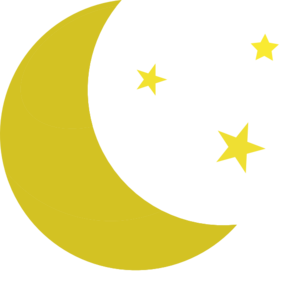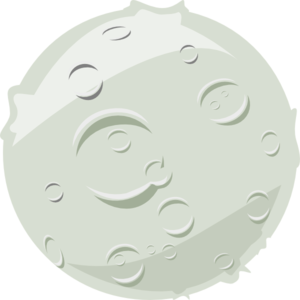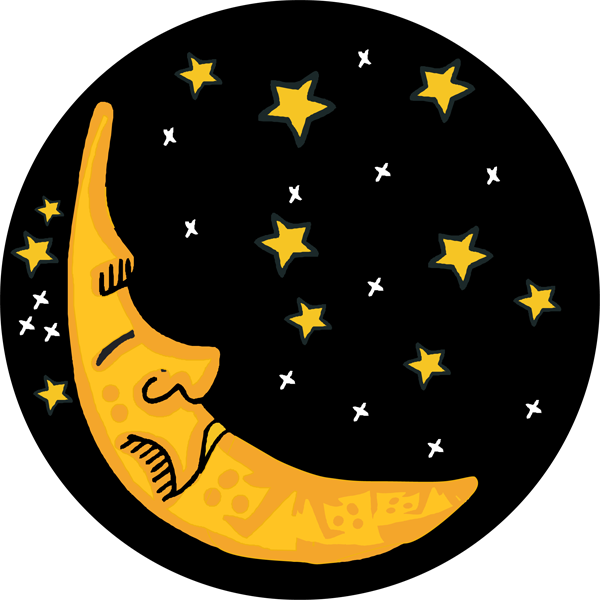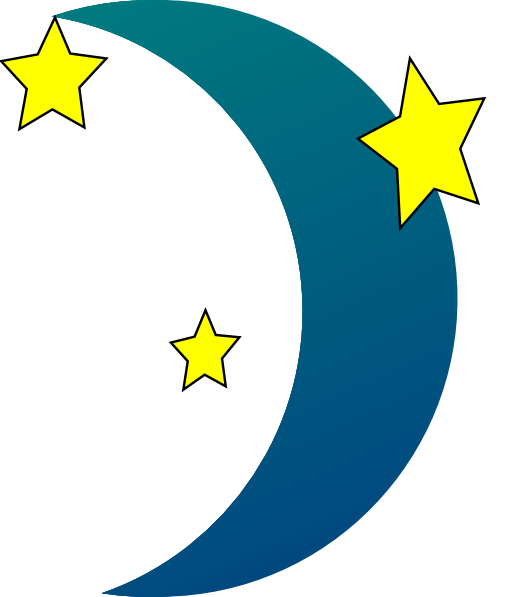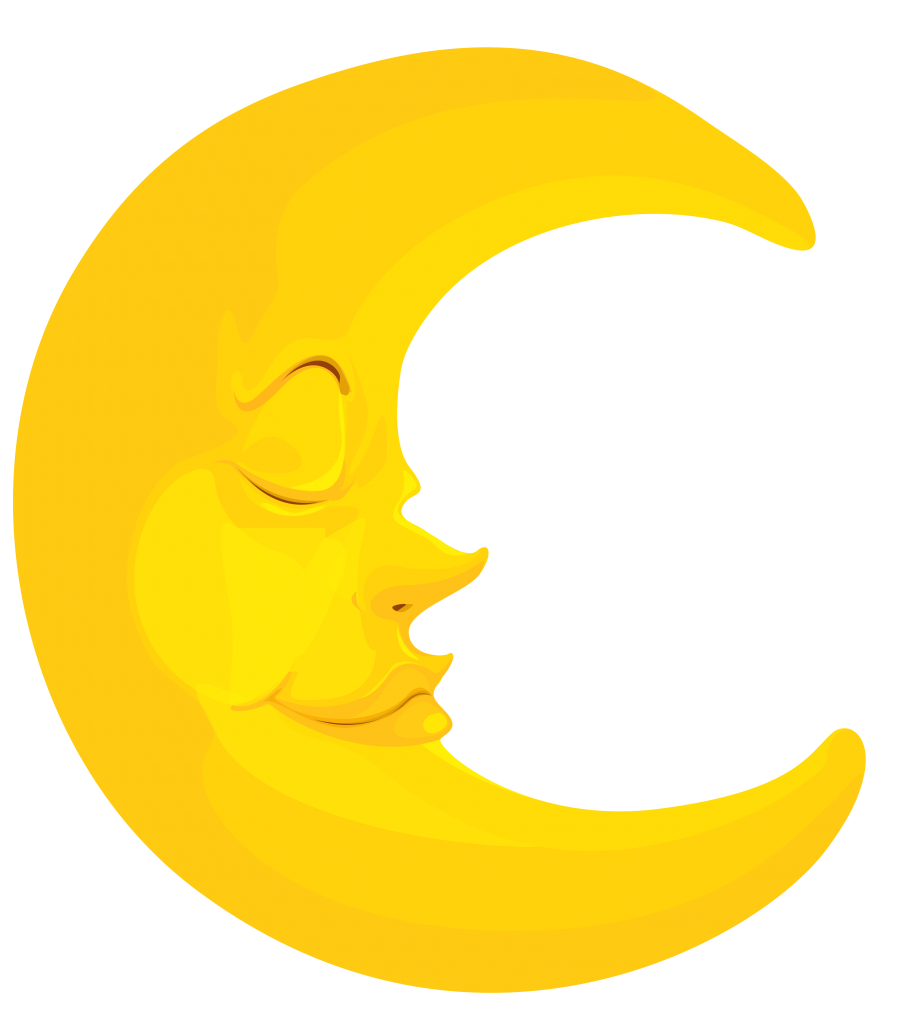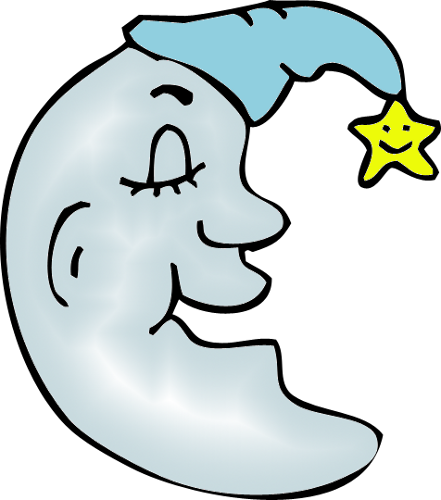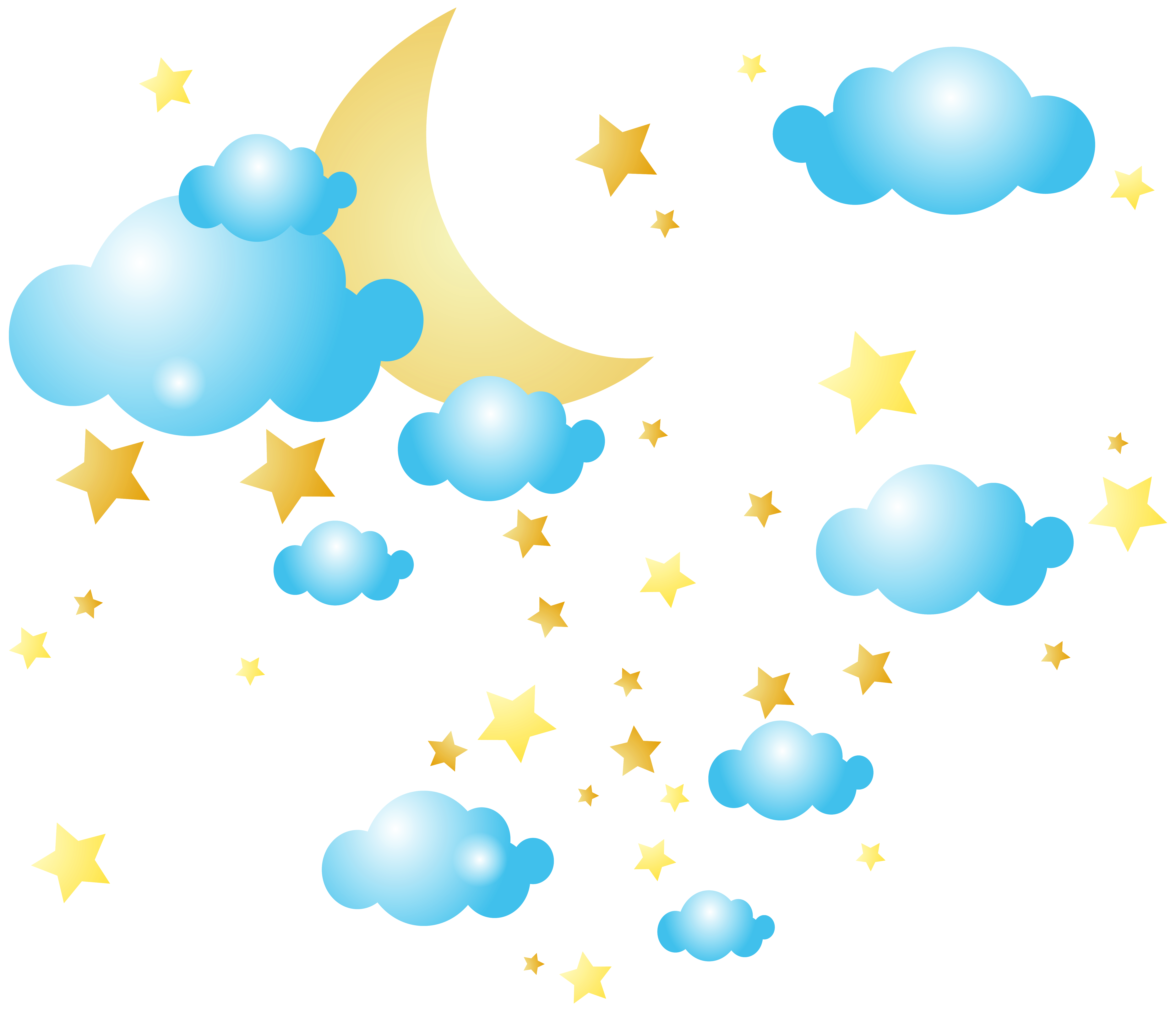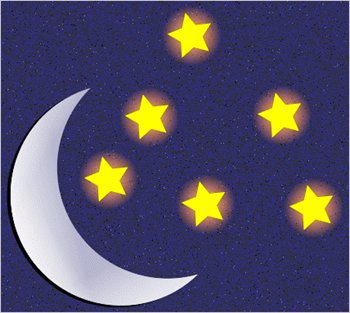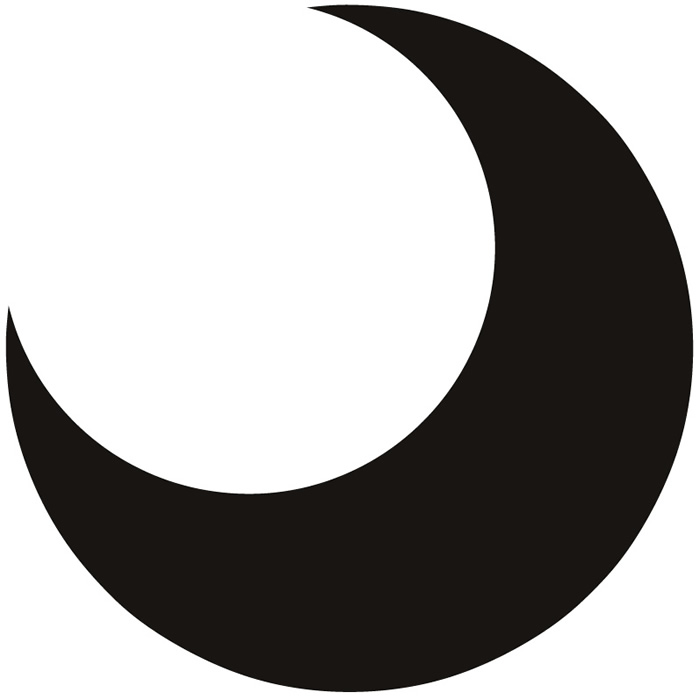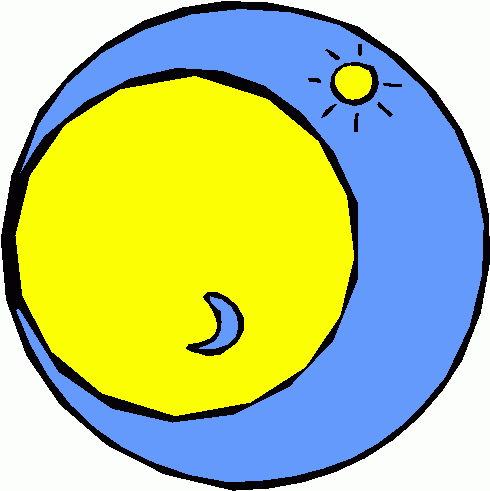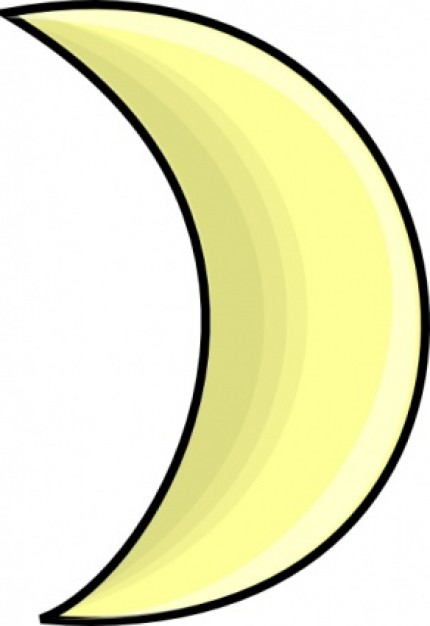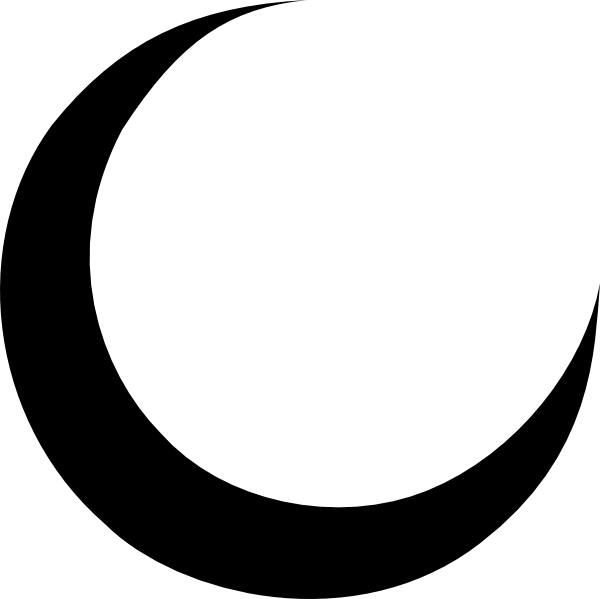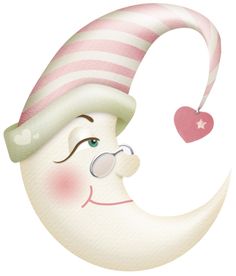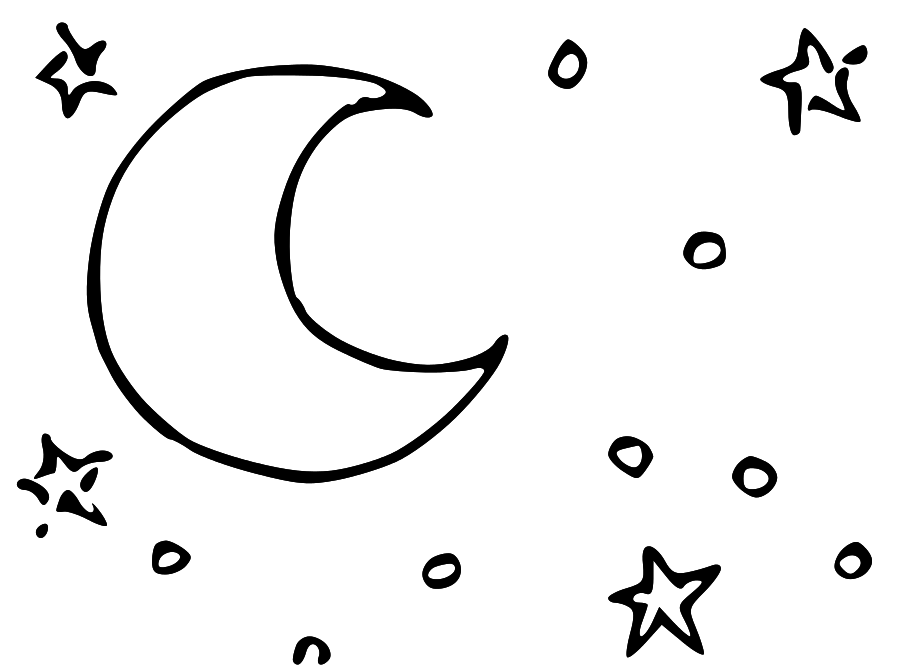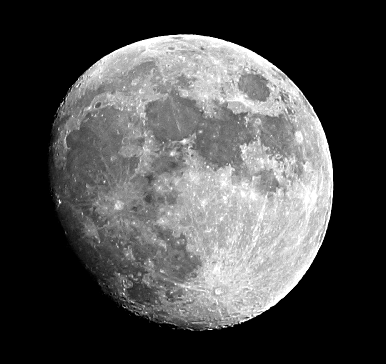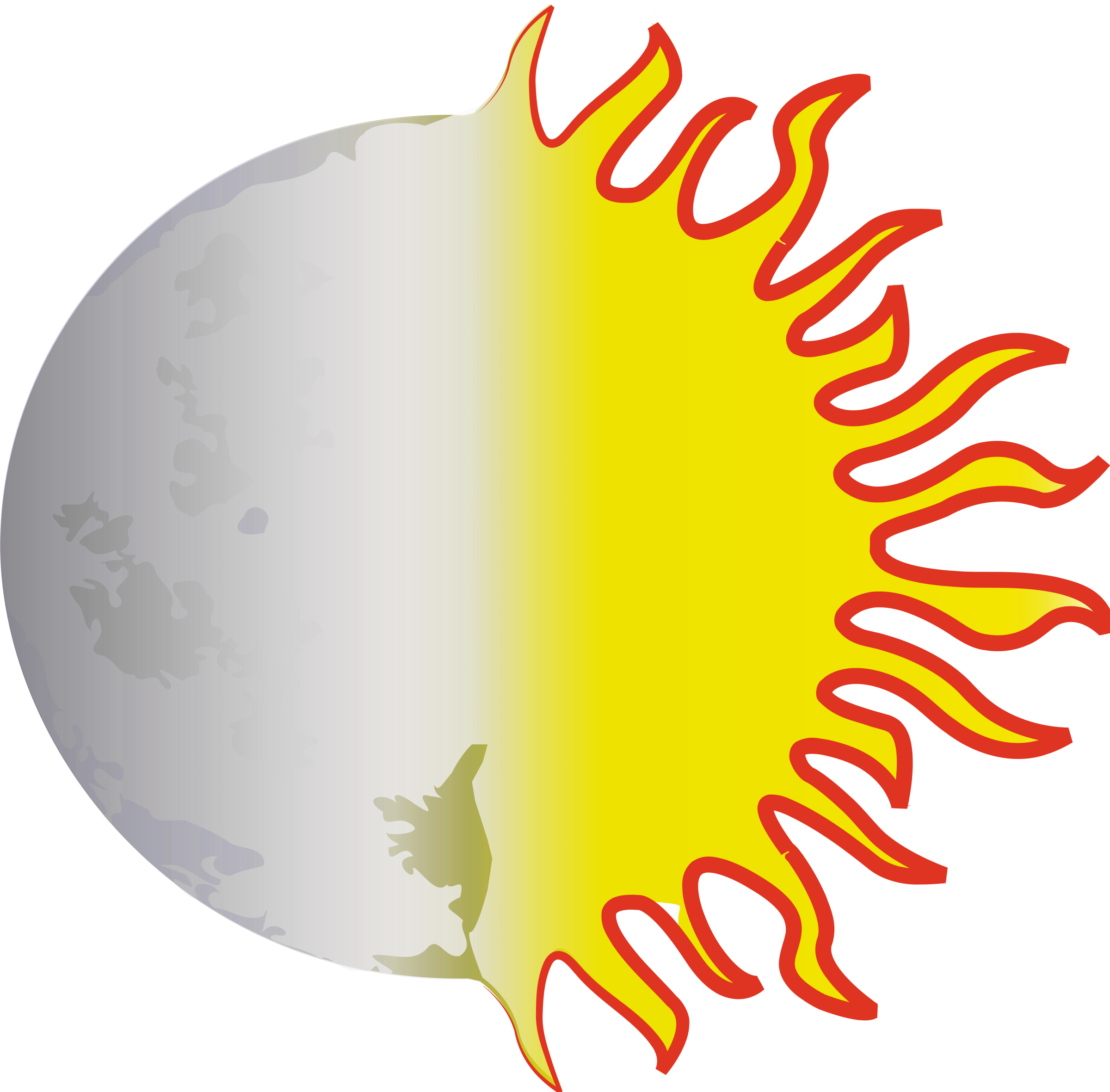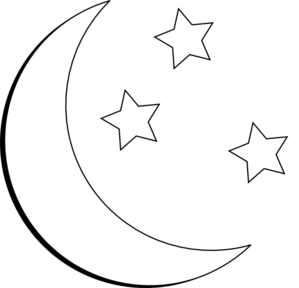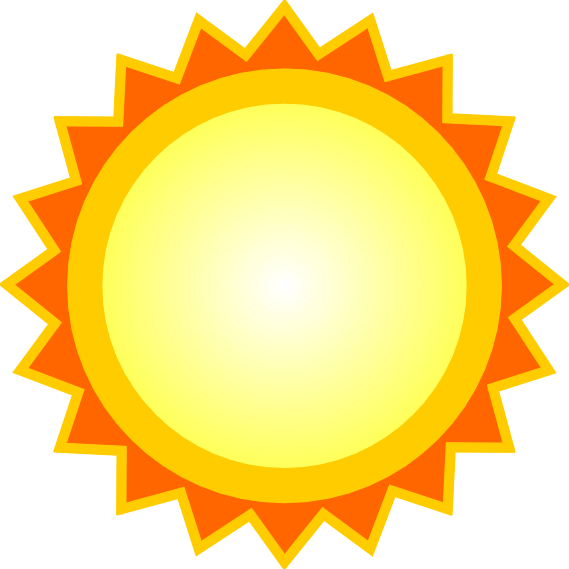Moon Clip Art
The Moon is Earth’s only natural satellite and the fifth largest moon in the solar system. With a diameter of 3,474 km, the Moon is much smaller than Earth. The Moon orbits our planet at a distance of about 384,000 km on average. Some key facts about the Moon include:
- Diameter: 3,474 km
- Mass: 7.35 x 1022 kg
- Distance from Earth: 384,400 km average
- Orbital Period: 27.3 days
- Gravity compared to Earth: 1/6
- Atmosphere: None
- Temperature Range: -190 C to 127 C
The Moon has a dark, volcanic surface covered with impact craters and lava formations called “maria” or “seas” because early astronomers mistook them for waters. There are also highland areas with visible bright streaks resulting from meteorites striking the surface. The Moon has no atmosphere and no liquid water. Its near and far sides permanently face Earth and deep space because the Moon rotates on its axis in about the same duration it takes to orbit Earth. This synchronous rotation allows the far side to never be visible from Earth with the naked eye.
Formation of the Moon
There are various dominant theories about the Moon’s origin and formation. The most prevalent hypothesis is that a Mars-sized protoplanet called Theia collided with Earth approximately 4.51 billion years ago when the solar system was still young and chaotic. The impact sent an enormous mass of debris from both bodies into orbit around Earth that eventually accreted to form the Moon. The Moon’s composition closely matches that of Earth’s crust and mantle, supporting this giant impact hypothesis. Alternative theories suggest the Moon spun off of Earth’s molten surface or it was captured by Earth’s gravity. But the matching isotope ratios between lunar and terrestrial rocks provide strong evidence for the collision model.
Moon Phases
The Moon orbits Earth, illuminated by the Sun from our perspective. We observe different portions of the lit part visible from Earth as the Moon progresses through its roughly 29.5 day lunar cycle. These are the phases of the Moon:
New Moon – At this phase, the almost fully unilluminated side of the Moon faces Earth. The Moon is mostly invisible except as a faint crescent if dimly lit by sunlight reflected from Earth.
Waxing Crescent – Following new moon is the waxing crescent phase as the Sun begins lighting up the right side of the Moon more and more each night from our vantage point. The crescent grows fatter.
First Quarter – At first quarter phase, the Moon has completed one quarter of its orbit and exactly half of the Moon facing Earth appears illuminated by the Sun.
Waxing Gibbous – The waxing gibbous phase has more than half of the Moon’s visible surface shone on by the Sun. The Moon is becoming mostly but not fully bright.
Full Moon – In its full phase, the whole visible area of the Moon fully reflects sunlight toward Earth in nearly its total illuminated glory.
The Moon then progresses through waning gibbous, last quarter, waning crescent, and back to new moon again, getting less and less bright each night before returning to complete blackness. The perpetual lunar cycle derives from the Moon’s changing angles of incident sunlight.
Appearance of the Moon
The most prominent surface features on the Moon today are impact craters formed by millennia of meteoroid strikes. With no eroding atmosphere or geological processes, lunar craters remain well preserved over exceptionally long time periods compared to Earth. Prominent craters over 100 km in diameter mar the lunar terrain across both the near and far sides. Craters with notable bright radial streaks of ejecta are called ray craters like Tycho and Copernicus craters. Also covering roughly one-sixth of the Moon’s landscape are expansive, darker plains called lunar maria created by ancient volcanic flooding. Mare Imbrium with its dark lava floor spans over 1,100 km for example. Aside from craters and maria, there are lunar mountains, rilles and other features. The highest lunar peaks reach approximately 10 km in elevation within the rims of impact craters.
Exploring the Moon
Humanity has conducted both robotic and crewed missions to explore and study the Moon. Luna 1 executed the first successful flyby of the Moon in 1959 by the Soviet space program. In 1966, Luna 9 made the first soft landing and returned initial images of the unseen lunar surface. Then in 1969, NASA astronauts Neil Armstrong and Buzz Aldrin became the first humans to set foot on the Moon during the historic Apollo 11 mission. Five subsequent Apollo missions between 1969-1972 continued lunar exploration and sample collection. To date, 12 astronauts have walked on the Moon’s surface. Unmanned lunar satellites remain in operation today, capturing scientific data and stunning visuals while orbiting 30-200 km above the Moon. Future goals include establishing a permanent human habitat on the Moon. Ongoing lunar study provides vital insight about the solar system’s foundation 4.5 billion years ago.
Moon Mythology and Folklore
The luminous night orb and its cycles have fascinated humanity across cultures since time immemorial. Myths abound regarding the Moon’s divine origins and connection to spiritual forces. The ancient Greek moon goddess was Selene, driving a chariot across the sky. In Chinese mythology, the goddess Chang’e ascended to reside on the Moon after swallowing an immortality potion. The Hindu moon deity Chandra presides over fertility, sanity and longevity. For the Norse peoples as wolves symbolised warriors, two wolves Sköll and Hati were believed to chase the personified “Man on the Moon”. Native American legends depict the Moon’s origins in various ways, like when the Great Spirit captured the Moon to comfort children at night. These and innumerable other myths helped explain the Moon before science revealed the truth about its nature.
The Moon in Art and Media
Just as lunar myths populated early consciousness, all manner of art, poetry, literature, songs, and film have incorporated Earth’s beguiling Moon in imaginative ways. English poet Lord Byron waxed poetic with: “She walks in beauty, like the night Of cloudless climes and starry skies; And all that’s best of dark and bright Meet in her aspect and her eyes”. Beethoven subtitled his “Moonlight” Piano Sonata evoking a boat sailing Lake Lucerne under moonbeams. More modern moody Moon depictions range from Tom Waits’ melancholic lyrics to Pink Floyd’s iconic prism moon images to Neil Armstrong’s “small step” immortalised on film. The allure of Earth’s solitary satellite companion has stimulated human expression across the ages.
Moon Clipart and Images
Clipart refers to readymade downloadable graphics used to illustrate documents and projects. Moon clipart offers stylised images of full moons, half moons, crescent moons and lunar cycles. Available moon clipart design varieties include:
- Cartoon moons with animated faces
- Realistic moons to scale as astronomical objects
- Crescent moon and full moons with or without extra landscape details
- Black cutout moons to layer onto different color backgrounds
- Patterned moons with floral or ornate motifs
- Frames, banners, badges with moons embedded
While professional designers craft their own original moon graphics, clipart moon drawings provide casual creators with quicker illustration options.
Using Moon Clipart
Moon clipart has diverse applications for enhancing personal to commercial designs without advanced software or drawing skills. Consider using:
- Dreamy moon clipart to embellish journal pages, vision board collages, schedules and calendars
- Modest moon clipart motifs to ornament retail promotional flyers
- Mystical moon clipart figures alongside nature clipart on event invites with enchanted forest or midnight garden themes
- Educational moon phase diagrams for school science reports and bulletin boards
With abundant clipart galleries online today, innovatively borrowing a variety of pre-made moon images poses no difficulty. After downloading choices in desired file formats, customising colors to coordinate with existing projects takes basic image editing knowledge.
Impact and Significance of the Moon
Despite its diminutive size compared to the Sun, the Moon wields monumental influence here on Earth. The most immediate lunar impact generates our ocean tides, stemming from the Moon’s gravitational tug combined with Earth’s rotation. These tidal forces cause water levels to rise and fall rhythmically about twice per day. The Moon governs wildlife movement and reproductive behaviour attuned to this flow. Lunar illumination also affects predator/prey interactions in a regular manner. Furthermore, evidence substantiates the Moon’s crucial role in stabilising Earth’s climate stability over geological eras – vital for life to evolve complexity. Most fundamentally, the consistent 29.5 day lunar cycle provides a steadfast marker of time itself reflected in our calendar systems tracking the passage of days, months and years. As the quintessential example of a satellite locked in orbital relationship with its parent planet, studies of the Moon reveal universal truths about gravitational dynamics. For life on Earth overall, the Moon represents an influential force of nature.
In this page clipartix present 79 moon clipart images free for designing activities. Lets download Moon Clip Art that you want to use for works or personal uses.
